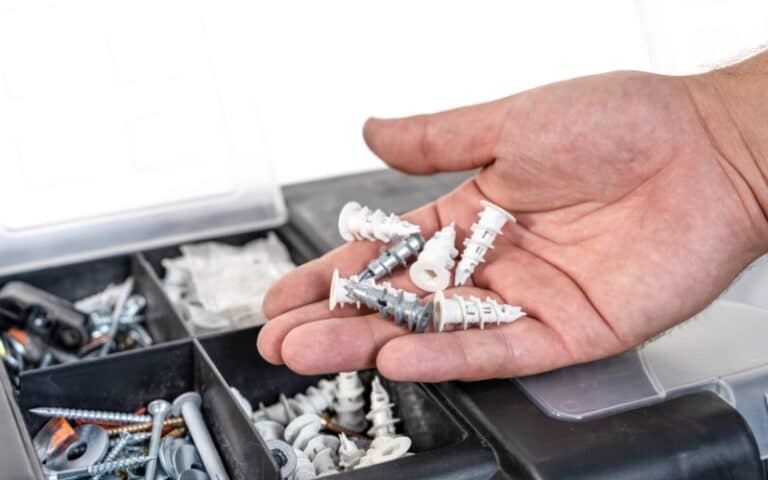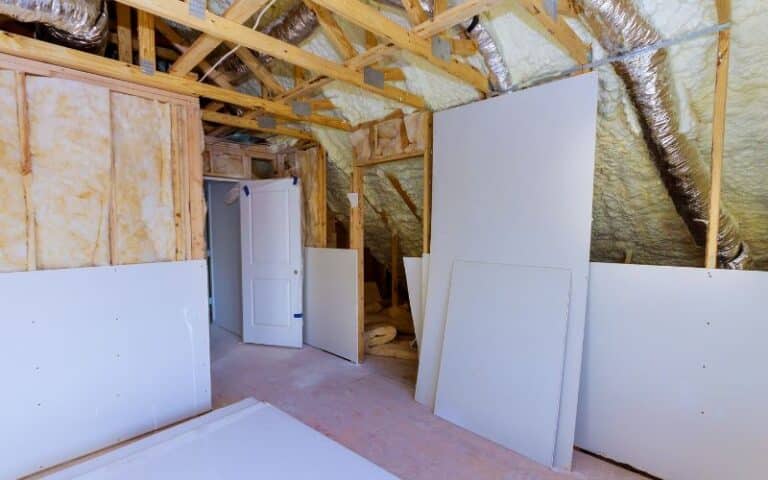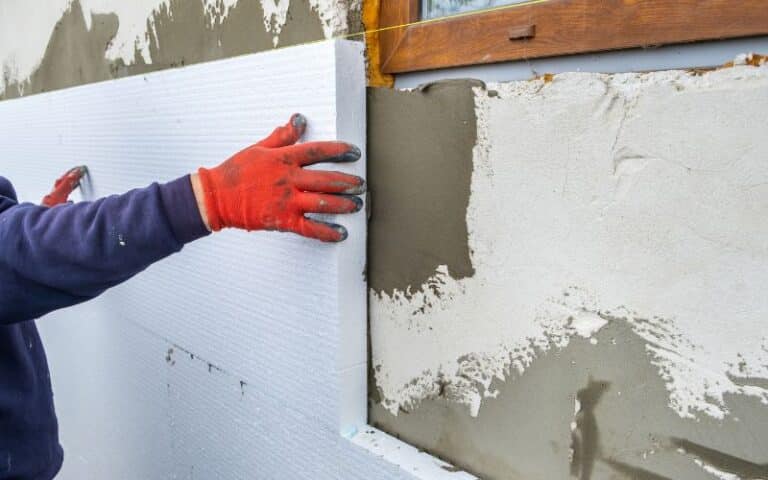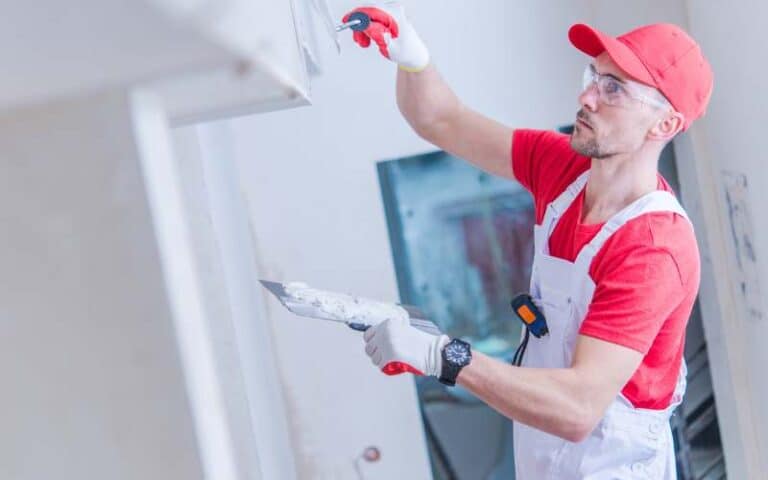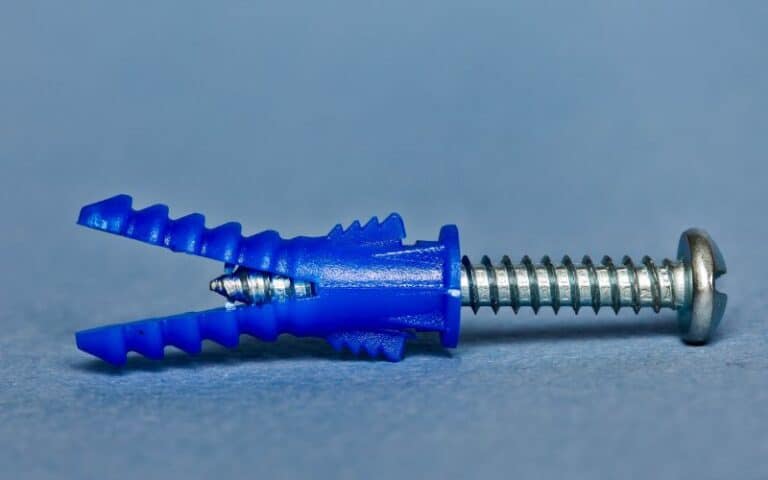Drywall is a popular building material in construction, but its manufacture and disposal can impact the environment negatively.
As using sustainable and greener products becomes increasingly essential, eco-friendly alternatives to regular drywall are gaining more attention.
Therefore, if you are looking for a better eco-friendly drywall alternative, you are definitely at the right spot.
Whether you are a homeowner or contractor, this article will assist you in selecting the best alternative solution that aligns with your eco-friendly goals.
There are various eco-friendly drywall alternatives that you can select from if you are planning on using eco-friendly construction materials. However, the right eco-friendly drywall alternative for you depends on your building style, budget, and preference. These alternatives include compressed fiber panels, reclaimed wood, and hempcrete. With these alternatives, you can significantly reduce your project’s carbon footprint.
In this article, I have created a guide with different environmentally friendly options you can use as alternatives to drywall.
This guide will help you to discover the best alternative that fits your project style, budget, and preference.
Ready for a Drywall Quiz?
Compressed Fiber Panels

Compressed fiber panels are excellent eco-friendly alternatives to traditional drywall.
These fiber panels go through a sustainable manufacturing process, including recycled materials.
The compressed fiber panels typically consist of recycled wood fibers, reducing the demand for new wood products and promoting recycling.
Here is a table showing the pros and cons of using compressed fiber panels over drywalls:
| Pros | Cons |
|---|---|
| Fiber panels consist of recycled/reclaimed wood. | Panels have higher upfront costs compared to drywall. |
| Compressed fiber panels are sustainable and eco-friendly. | It is not available in some areas. |
| It has a lower environmental impact. | It requires specialized installation expertise. |
| It is durable and long-lasting. | It can be susceptible to moisture damage. |
| It does not contain harmful chemicals. | It requires proper sealing and maintenance. |
#1. Cost
Compressed fiber panels may be slightly more expensive than regular drywall. On average, fiber panels can range from $2 to $6 per square foot.
When calculating the overall price, you should consider installation and labor costs. Though the panel is expensive, they are also sustainable and durable.
#2. Functionality
Compressed fiber panels are durable eco-friendly alternatives to drywall due to their content.
The fiber panels consist of recycled and reclaimed wood fibers, reducing the demand for fresh wood materials while promoting sustainable forestry practices.
These fiber panels are also free from harmful content and chemicals such as formaldehyde in drywalls.
These features make it a better option for healthier indoor air quality. The panels are also more durable and last-longing than the drywall, which contributes to reducing waste generation.
Furthermore, it gives your project an aesthetic outlook while achieving eco-friendly goals.
Straw Bales
Straw bales are the most environmentally friendly alternative to drywall due to their eco-friendly characteristics.
Straw bales consist of materials from agricultural byproducts such as rice or wheat straw. These materials are also biodegradable waste materials.
Furthermore, by using straw bales in your construction project, you can help reduce agricultural waste and promote the use of renewable materials.
This table illustrates the pros and cons of using straw bales instead of drywalls:
| Pros | Cons |
|---|---|
| It has high soundproofing capabilities. | It can be vulnerable to pests and insects if not properly treated. |
| It is cost-effective and widely available. | It is not available in certain regions. |
| It is natural, non-toxic, and biodegradable. | It has thicker walls that may reduce interior floor space. |
| Straw bales have excellent thermal insulation properties. | It requires proper sealing and finishing. |
| You can source it locally. | It requires skilled construction labor. |
#1. Cost
Straw bales are the cheapest eco-friendly alternative to drywall. It can also be less expensive than drywall if you purchase it in bulk.
The price of straw bales ranges from $1.5 to $6 per bale, depending on the region and its availability.
But, you should consider other additional costs that come with installing the straw bales for your project.
#2. Functionality
Straw bales are one of the most eco-friendly alternatives to traditional drywalls since they comprise agricultural waste, a renewable building material.
It decreases popular demand for new materials and diverts waste from refuse landfills.
Straw bales also have excellent insulating properties, providing thermal properties during cold winters and reducing heating and cooling costs.
In addition, straw bales are non-toxic with low material energy, which means they do not require much energy for processing and manufacture.
Furthermore, this drywall alternative is biodegradable, and you can easily recycle them at the end of their lifespan, minimizing environmental implications.
Synthetic Gypsum Drywall
Synthetic gypsum is a byproduct of industrial procedures such as coal power plant emissions, and it is a replacement for natural gypsum in drywall manufacture.
Using synthetic gypsum drywall helps to deviate waste materials from landfills and decreases the necessity for gypsum mining.
The table below illustrates the pros and cons of using synthetic gypsum drywall:
| Pros | Cons |
|---|---|
| Synthetic gypsum drywall contains recycled materials. | It might have a higher initial cost. |
| It consumes lesser energy during production. | It requires proper handling and disposal. |
| It reduces waste and landfill use. | It has lower fire resistance. |
| It reduces water usage in production. | It has chemical additives or impurities. |
| It has comparable performance to traditional drywall. |
#1. Cost
Synthetic gypsum drywall costs about $0.30 to $0.70 per square foot. However, you must consider the additional cost of installation, finishing, and accessories you might require.
The price range can vary depending on the brand, location, and quantity you require for your project.
The cost of synthetic gypsum drywall is comparable to traditional drywall though more eco-friendly and sustainable.
#2. Functionality
Although synthetic gypsum drywall is similar to traditional drywall, it has more eco-friendly features and benefits than the latter.
Synthetic gypsum drywall is a byproduct of coal power plants or the desulfurization of flue gas.
Using this synthetic gypsum drywall instead of natural gypsum drywall reduces the need for mining gypsum, conserving natural resources.
Furthermore, utilizing synthetic gypsum reduces the carbon footprint of construction companies.
It diverts industrial waste from landfills and incorporates it into drywall production.
Additionally, synthetic gypsum drywall shares similar properties and features with regular drywall. Some of these properties include durability, fire resistance, and sound insulation.
Hempcrete
Hempcrete is a better eco-friendly alternative to drywall in certain aspects. Hemp is more lightweight and insulating than drywall as it combines hemp fibers and lime binder.
This table illustrates the pros and cons of using hempcrete for your building project:
| Pros | Cons |
|---|---|
| Hempcrete is a sustainable material. | Its availability is limited, and it has a higher cost. |
| It has a low environmental impact. | It takes longer construction time. |
| It has good insulation properties. | It requires specialized knowledge and skills. |
| It has good moisture regulation. | It does not have a good load-bearing capacity. |
| It is fire-resistant. | Its thickness may reduce the interior space. |
Hemp is a renewable resource that grows quickly and requires lesser water and pesticide.
This feature makes it a sustainable choice that decreases the demand for non-renewable materials in drywall manufacture.
#1. Cost
Hempcrete is one of the most expensive eco-friendly alternatives to drywall due to its scarcity and cost. On average, hempcrete costs about $180 per square foot or more.
However, its price varies depending on location, availability, and project size.
#2. Functionality
Hempcrete is quite scarce due to its rare availability and high cost of production. However, it is a more eco-friendly and sustainable choice compared to drywall.
Nonetheless, hempcrete has strong insulation properties, which provide your home with effective thermal regulation and minimizes the energy consumption you will need for heating.
Additionally, it is a carbon-negative resource, which absorbs and separates carbon dioxide from the air during its curing process.
This feature makes it essential in carbon reduction efforts. Hempcrete also consists of core fibers from hemp plants that grow quickly, requiring lesser water and pest control measures.
Furthermore, this eco-friendly alternative is also natural and non-toxic, free from volatile organic compounds typically found in drywall.
No-Gypsum Drywall Panels
No-gypsum drywall panels, as the name suggests, do not have gypsum in their core, unlike traditional drywall.
Moreover, no-gypsum drywall utilizes alternative raw materials with less environmental impact.
The panels usually consist of renewable materials like agricultural waste or cellulose fibers.
Furthermore, using recycled materials reduces dependence on mining gypsum and minimizes resource depletion.
Here is a table illustrating its pros and cons in comparison to drywall:
| Pros | Cons |
|---|---|
| It has moisture resistance. | It requires specialized installation. |
| It is lightweight and easy to handle. | It is less familiar to contractors. |
| It has mold and mildew resistance. | It might be higher than your budget. |
| It has fire resistance. | Its compatibility with existing structures may vary. |
| It has high thermal insulation and soundproofing capabilities. | It has a higher risk of denting. |
#1. Cost
The cost of no-gypsum drywall panels tends to be higher than regular drywall due to the incorporation of eco-friendly alternative materials and manufacturing procedures.
Nonetheless, drywall panels range from $2.5 to $5 per square foot. However, the price can vary depending on the brand, thickness, size, supplier, and retailer.
#2. Functionality
Unlike conventional drywall, no-gypsum panels are an eco-friendly alternative to drywall because they do not contain gypsum in their core.
However, it contains alternative resources like recycled cellulose fibers, agricultural residues, or natural minerals. These raw materials have a lesser impact on the environment.
Another feature of this eco-friendly alternative is that it reduces reliance on gypsum mining, thus reducing mining effects on natural habitats.
Furthermore, no-gypsum drywall has a higher fire, moisture, and mold resistance performance, eliminating the need for more chemical treatment.
This feature also improves indoor air quality and reduces health hazard risks that come from volatile organic compounds in drywall.
By incorporating alternative materials, no-gypsum drywall helps conserve natural resources and mitigate environmental damage.
Despite its cost, consider its long-term benefits as an ecologically friendly alternative, such as decreased environmental impact and energy efficiency.

